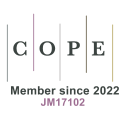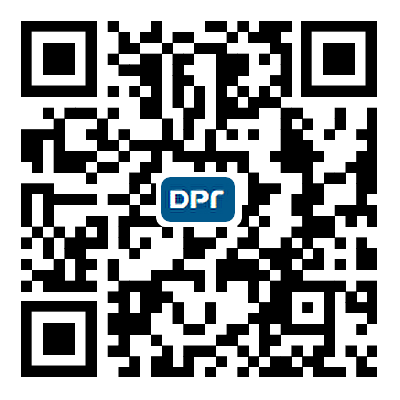REFERENCES
1. Report of the open-ended intergovernmental expert working group on indicators and terminology relating to disaster risk reduction: note/by the secretary-general. 2016. Available from: https://digitallibrary.un.org/record/852089?v=pdf [Last accessed on 31 Jul 2024].
2. Chester DK, Duncan AM. Responding to disasters within the Christian tradition, with reference to volcanic eruptions and earthquakes. Religion 2010;40:85-95.
3. Birkmann J. Measuring vulnerability to natural hazards: towards disaster resilient societies. 2007. Available from: http://www.jstor.org/stable/40961652 [Last accessed on 31 Jul 2024].
4. Pelling M, Dill K. 'Natural’ disasters as catalysts of political action. 2005. Available from: https://api.semanticscholar.org/CorpusID:147462097 [Last accessed on 31 Jul 2024].
5. Trias APL, Cook AD. Future directions in disaster governance: insights from the 2018 central Sulawesi earthquake and Tsunami response. Int J Dis Risk Reduct 2021;58:102180.
6. Jones S, Manyena B, Walsh S. Chapter 4 - disaster risk governance: evolution and influences. In: Hazards, risks, and disasters in society; 2015. pp. 45-61.
7. Yokohama Strategy and Plan of Action for a Safer World: guidelines for natural disaster prevention, preparedness and mitigation. 1994. Available from: https://www.undrr.org/publication/yokohama-strategy-and-plan-action-safer-world-guidelines-natural-disaster-prevention [Last accessed on 31 Jul 2024].
8. World Conference on Disaster Reduction. Hyogo framework for action 2005-2015: building the resilience of nations and communities to disasters. 18-22 January 2005, Kobe, Hyogo, Japan. Available from: https://www.unisdr.org/2005/wcdr/intergover/official-doc/L-docs/Hyogo-framework-for-action-english.pdf [Last accessed on 31 Jul 2024].
9. United Nations. Sendai framework for disaster risk reduction 2015-2030. 2015. Available from: https://www.preventionweb.net/files/43291_sendaiframeworkfordrren.pdf [Last accessed on 31 Jul 2024].
10. United Nations. Transforming our world: the 2030 agenda for sustainable development. 2015. Available from: https://sdgs.un.org/2030agenda [Last accessed on 31 Jul 2024].
11. United Nations. The Paris agreement. 2015. Available from: https://unfccc.int/sites/default/files/resource/parisagreement_publication.pdf [Last accessed on 31 Jul 2024].
12. Gomez-Echeverri L. Climate and development: enhancing impact through stronger linkages in the implementation of the Paris agreement and the sustainable development goals (SDGs). Philos Trans A Math Phys Eng Sci 2018;376:20160444.
13. Kelman I. Linking disaster risk reduction, climate change, and the sustainable development goals. Dis Prev Manag 2017;26:254-8.
14. United Nations Department of Economic and Social Affairs. Synergy solutions for a world in crisis: tackling climate and SDG action together: report on strengthening the evidence base. 2023.
15. Pariyar RK. Disaster vulnerability assessment in Parshuram municipality, Dadeldhura, Nepal. Geog Base 2021;7:79-90.
16. Aryal K. Getting down to local level: exploring vulnerability to improve disaster management systems in Nepal. 2012. Available from: https://nrl.northumbria.ac.uk/id/eprint/9145 [Last accessed on 31 Jul 2024].
17. Aksha SK, Juran L, Resler LM, Zhang Y. An analysis of social vulnerability to natural hazards in Nepal using a modified social vulnerability index. Int J Dis Risk Sci 2019;10:103-16.
18. Gautam D. Assessment of social vulnerability to natural hazards in Nepal. Nat Haz Earth Syst Sci 2017;17:2313-20.
20. International database. 2023. Available from: www.census.gov/data-tools/demo/idb/#/country?COUNTRY_YEAR=2023&COUNTRY_YR_ANIM=2023&FIPS_SINGLE=NP [Last accessed on 31 Jul 2024].
21. World Bank Group. Rural population (% of total population) - Nepal. 2022. Available from: https://www.census.gov/data-tools/demo/idb/#/dashboard?COUNTRY_YEAR=2023&COUNTRY_YR_ANIM=2023&FIPS_SINGLE=NP [Last accessed on 31 Jul 2024].
22. World Bank Group. Rural population (% of total population) - South Asia. 2022. Available from: https://data.worldbank.org/indicator/SP.RUR.TOTL.ZS?locations=8S [Last accessed on 31 Jul 2024].
23. National Statistic Office. Census's publication and reports. 2021. Available from: https://censusnepal.cbs.gov.np/Home/Details?tpid=5&dcid=3479c092-7749-4ba6-9369-45486cd67f30&tfsid=17 [Last accessed on 31 Jul 2024].
24. Bista R. The impact of vulnerability and income distribution on inequality and poverty: analysis of flood and landslides in vulnerable locations of Nepal. 2020. Available from: https://mpra.ub.uni-muenchen.de/98935/ [Last accessed on 31 Jul 2024].
27. Tuladhar G, Yatabe R, Dahal RK, Bhandary NP. Knowledge of disaster risk reduction among school students in Nepal. Geomat Nat Haz Risk 2014;5:190-207.
28. Natural calamity (relief) act. 2039 B.S. 1982. Available from: https://www.lawcommission.gov.np/en/wp-content/uploads/2018/10/natural-calamity-relief-act-2039-1942.pdf [Last accessed on 31 Jul 2024].
29. Vij S, Russell C, Clark J, Parajuli BP, Shakya P, Dewulf A. Evolving disaster governance paradigms in Nepal. Int J Dis Risk Reduct 2020;50:101911.
30. Chaulagain H, Gautam D, Rodrigues H. Chapter 1 - revisiting major historical earthquakes in Nepal: overview of 1833, 1934, 1980, 1988, 2011, and 2015 seismic events. In: impacts and insights of the Gorkha earthquake; 2018. pp. 1-17.
31. Japan International Cooperation Agency. The study on earthquake disaster mitigation in the Kathmandu Valley, Kingdom of Nepal: final report; Vol. 4. - Appendix; 2002. Available from: https://openjicareport.jica.go.jp/216/216/216_116_11685823.html [Last accessed on 31 Jul 2024].
32. Basnet K. Earthquake and its impacts on education: aftermath Nepal quake 2015. Eur Educ Res 2020;3:101-18.
33. Disaster risk reduction in Nepal, Status report. 2019. Available from: https://reliefweb.int/report/nepal/disaster-risk-reduction-nepal-status-report-july-2019 [Last accessed on 31 Jul 2024].
34. Rai DC, Singhal V, Mondal G, Parool N, Pra T, Mitra K. The M 6.9 Sikkim (India-Nepal border) earthquake of 18 September 2011. Curr Sci 2012;102:1437-46. Learning from earthquakes. M 6.9 Sikkim earthquake of September 18, 2011. Available from: http://www.jstor.org/stable/24107802 [Last accessed on 31 Jul 2024]
35. Learning from earthquakes. M 6.9 Sikkim earthquake of September 18, 2011. Available from: https://www.eeri.org/images/archived/wp-content/uploads/September-18-2011-Sikkim-India-EQ-Nov11-6.pdf [Last accessed on 31 Jul 2024].
36. Learning from earthquakes. The Mw 6.9 Sikkim-Nepal border earthquake of September 18, 2011. Available from: https://www.eeri.org/images/archived/wp-content/uploads/Sikkim-EQ-report-FINAL_03-08.pdf [Last accessed on 31 Jul 2024].
37. Ovesen P, Heiselberg S. The humanitarian response to the 2015 Nepal earthquake. 2016. Available from: https://www.un.org/en/chronicle/article/humanitarian-response-2015-nepal-earthquake [Last accessed on 31 Jul 2024].
38. United Nations. The humanitarian response to the 2015 Nepal earthquake. Available from: https://www.unocha.org/attachments/792297f9-7ef3-3bdc-a7c1-3137203dc486/nepal_earthquake_humanitarian_response_report_lr.pdf [Last accessed on 31 Jul 2024].
39. Bothara J, Ingham J, Dizhur D. Chapter 11 - earthquake risk reduction efforts in Nepal 2018. In: integrating disaster science and management - global case studies in mitigation and recovery; 2018, pp. 177-203.
40. Bhandaril D, Neupane S, Hayes P, Regmi B, Marker P. Disaster risk reduction and management in Nepal: delineation of roles and responsibilities. 2020. Available from: https://www.opml.co.uk/files/Publications/a1594-strengthening-the-disaster-risk-response-in-nepal/delineation-of-responsibility-for-disaster-management-full-report-english.pdf [Last accessed on 31 Jul 2024].
41. Malla SB, Dahal RK, Hasegawa S. Analyzing the disaster response competency of the local government official and the elected representative in Nepal. Geoenviron Disasters 2020;7:15.
42. The Constitution of Nepal. Available from: https://ag.gov.np/files/Constitution-of-Nepal_2072_Eng_www.moljpa.gov_.npDate-72_11_16.pdf [Last accessed on 31 Jul 2024].
43. Adhikari BR, Gautam S. A review of policies and institutions for landslide risk management in Nepal. Nep Pub Pol Rev 2022;2:93-112.
44. National policy on disaster risk reduction. 2018. Available from: http://drrportal.gov.np/uploads/document/1476.pdf [Last accessed on 31 Jul 2024].
45. Tuladhar RM. Towards effective and sustainable disaster risk management in Nepal: challenges and gaps. J Nepal Geol Soc 2019;59:39-48.
46. Oven K. Natural hazards governance in Nepal. 2019. Available from: https://oxfordre.com/naturalhazardscience/display/10.1093/acrefore/9780199389407.001.0001/acrefore-9780199389407-e-312 [Last accessed on 31 Jul 2024].
47. Chaudhary D. The decentralization, devolution and local governance practices in Nepal: the emerging challenges and concerns. J Polit Sci 2019;19:43-64.
48. Ito J, Kawashima Y. Issues of the local disaster management plan from the viewpoint of local government partnerships. 2014. Available from: https://nagoya.repo.nii.ac.jp/records/18979 [Last accessed on 31 Jul 2024].
49. Rehanaz Begum S, Jaisankar G, Boyidi S, et al. Road network for disaster guide in rural area, east Godavari district, AP, India - a case study of spatial approach; In: Rao P, Rao K, Kubo S, editors. Proceedings of international conference on remote sensing for disaster management. Springer series in geomechanics and geoengineering. Cham: Springer; 2019.
51. M.Sc Earthquake Engineering. Available from: https://www.collegenp.com/course/thapathali-campus-institute-of-engineering-kathmandu-msc-earthquake-engineering-msc-engineering/ [Last accessed on 31 Jul 2024].
52. Institute of medicine. Available from: https://iom.tu.edu.np/ [Last accessed on 31 Jul 2024].
53. ME structural engineering course curriculums. Available from: https://civil.ku.edu.np/static-page/me-structural-engineering-course-curriculums [Last accessed on 31 Jul 2024].
54. Aryal A, Wilkinson S, Chang-Richards A. Community participation to build back better: evidence from the 2015 Nepal earthquakes. In: Asgary A, editor. Resettlement challenges for displaced populations and refugees. Cham: Springer International Publishing; 2019. pp. 175-83.
55. Pandey CL. Making communities disaster resilient: challenges and prospects for community engagement in Nepal. Dis Prev Manag 2019;28:106-18.
56. Patnaik SM. Community participation strategies in Nepal’s disaster management. In: Singh A, editor. International handbook of disaster research. Singapore: Springer Nature; 2022. pp. 1-16.
57. Community Based Disaster Risk Management Platform. Community based disaster risk management platform. Available from: https://cbdrmplatform.org/index.php/ [Last accessed on 31 Jul 2024].
58. Ulrich J. Nepal’s municipal disaster risk governance assessment tool: a case study on strengthening disaster risk management. 2022. Available from: https://preparecenter.org/story/nepals-municipal-disaster-risk-governance-assessment-tool-a-case-study-on-strengthening-disaster-risk-management/ [Last accessed on 31 Jul 2024].
59. Lam LM, Kuipers R. Resilience and disaster governance: some insights from the 2015 Nepal earthquake. Int J Dis Risk Reduct 2019;33:321-31.
60. Panday S, Rushton S, Karki J, Balen J, Barnes A. The role of social capital in disaster resilience in remote communities after the 2015 Nepal earthquake. Int J Dis Risk Reduct 2021;55:102112.
61. Zack N. Ethics for disaster. 2023. Available from: https://books.google.com/books?hl=zh-CN&lr=&id=T1W_EAAAQBAJ&oi=fnd&pg=PP1&dq=%5B61%5D+N.+Zack,+Ethics+for+disaster,+Rowman+%26+Littlefield,+2023.&ots=LXmipEeQ-Y&sig=sKpY1lu43B8rDiZVtU4Io4Mc-5M#v=onepage&q&f=false [Last accessed on 31 Jul 2024].
62. Pudasaini U, Karna SK, Pageni B, Gautam S. Applications of drones in DRR: prospects and challenges in Nepal. Vol. 14; 2021. Available from: https://www.spotlightnepal.com/2021/06/24/applications-drones-drr-prospects-and-challenges-nepal/ [Last accessed on 31 Jul 2024].
63. Devkota N, Rajbhandari S, Poudel UR, Parajuli S. Obstacles of implementing industry 4.0 in Nepalese industries and way-forward. Int J Finance Res 2021;2:286-95.
64. Bhattarai MK. Information and communication technology scenario of Nepal: assessing policy environment and challenges. Nep Pub Pol Rev 2021;1:201-11.
65. Ghimire LP, Kim Y. An analysis on barriers to renewable energy development in the context of Nepal using AHP. Renew Energy 2018;129:446-56.
66. Onugha I. Information and communications technology: sectoral analysis: Nepal (English). 2018. Available from: http://documents.worldbank.org/curated/en/635651556737705234/Sectoral-Analysis-Nepal [Last accessed on 31 Jul 2024].






